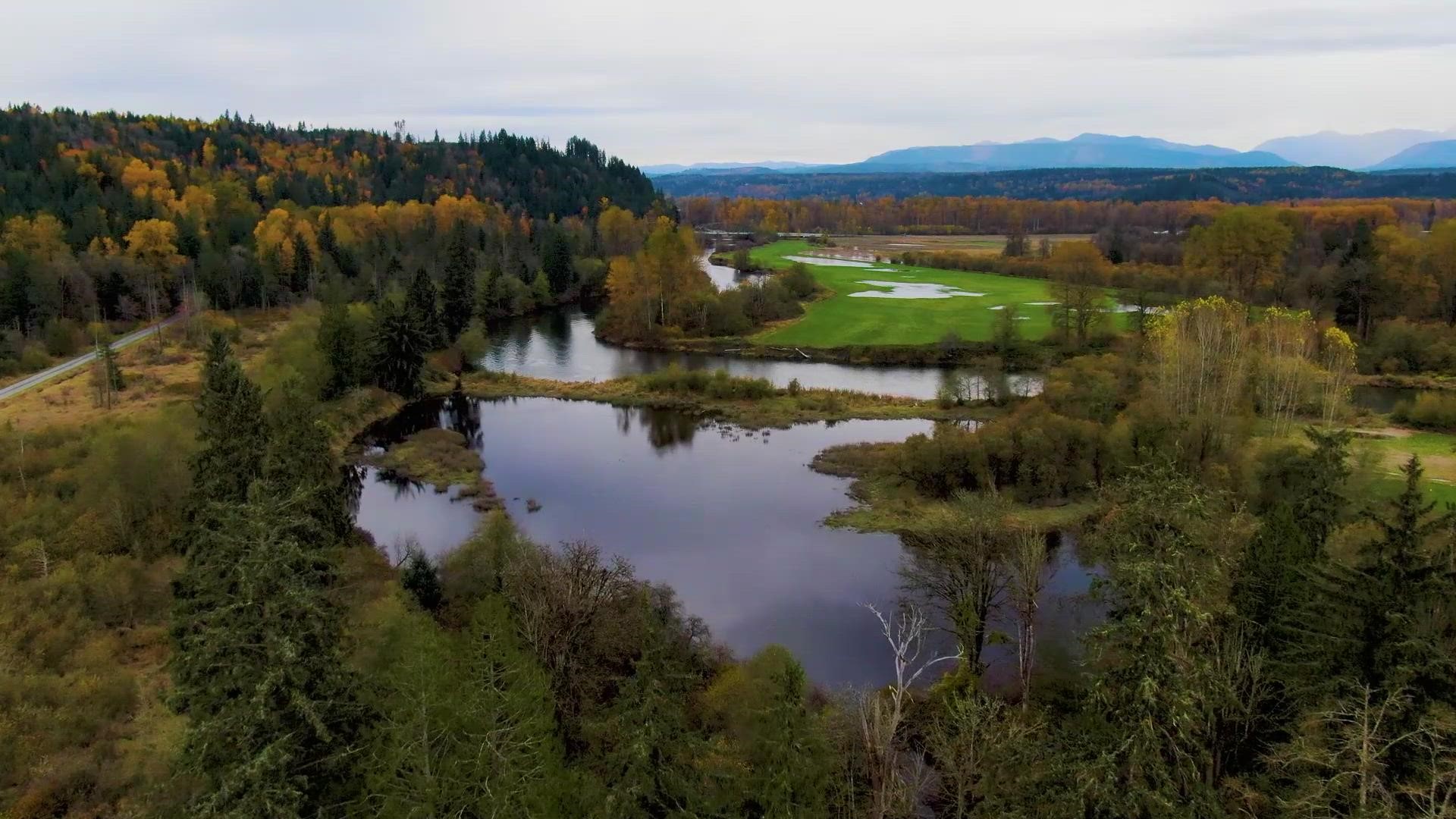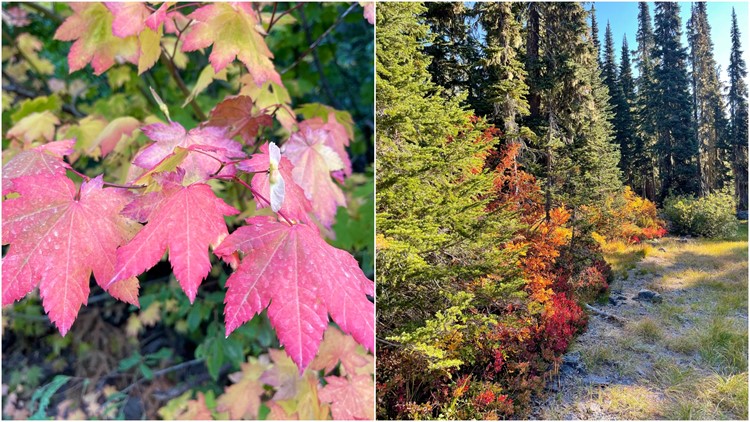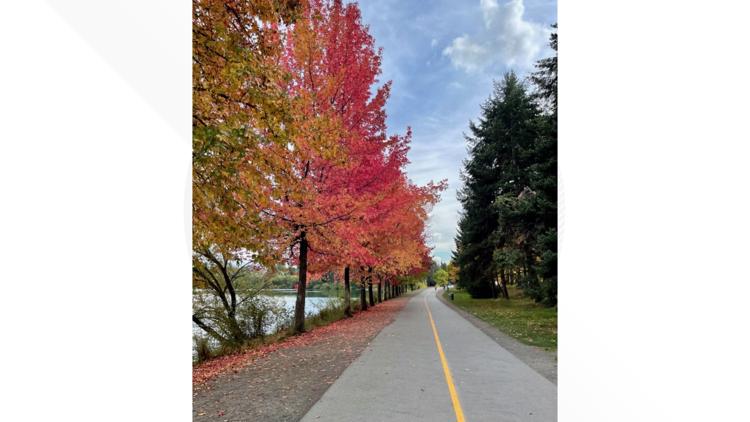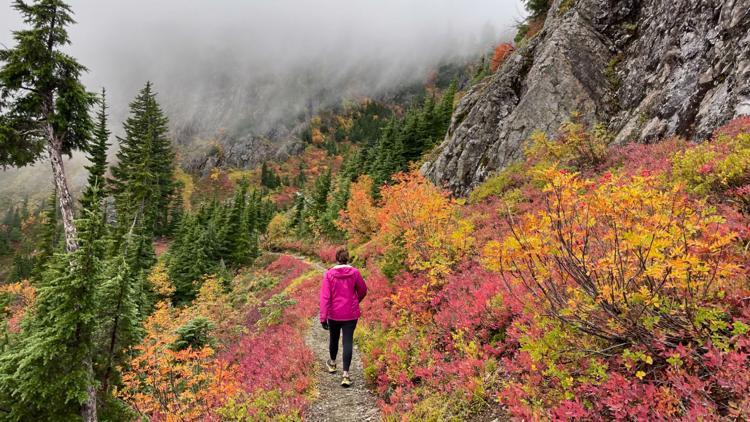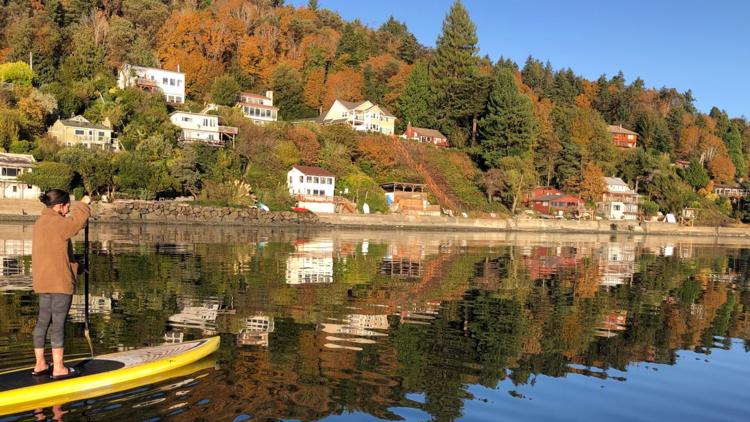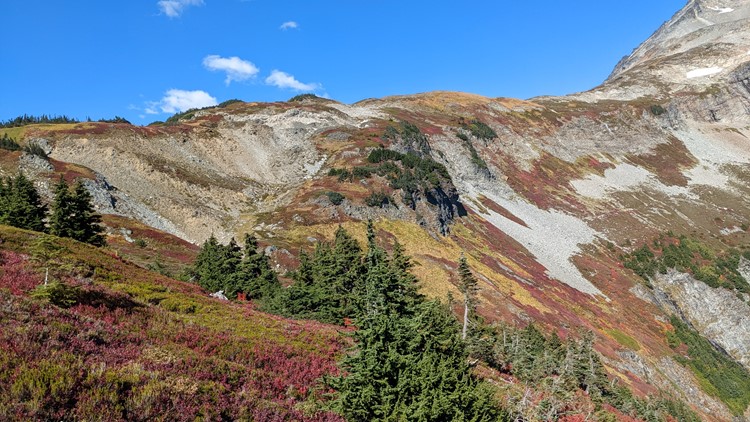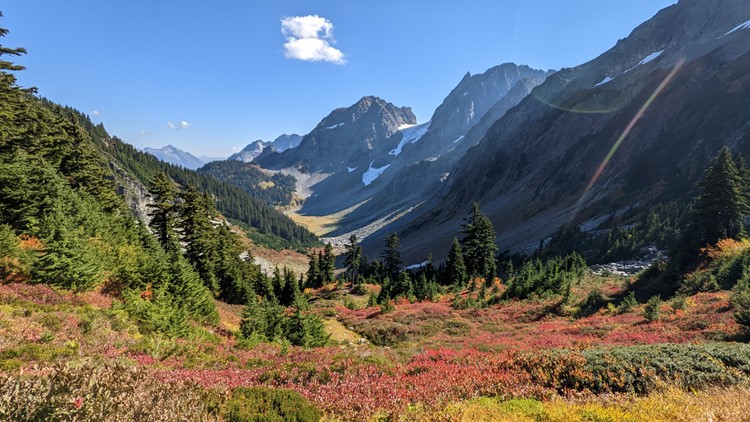SEATTLE — Fall is upon us and that means falling temperatures and colorful, falling leaves.
Washington is known for its lush, picturesque evergreens, but the state experiences plenty of "pops" of color with vibrant reds, oranges and yellows as we advance through the fall season. It is especially beautiful when paired with the contrasting backdrop of hunter green and those vibrant fall colors sprinkled in.
Leaves are already changing colors in parts of western Washington. King and Snohomish counties are near peak fall color, and other parts of western Washington are expected to peak over the next week. However, the exact timing of the color change is a tricky science with many factors and can be heavily dependent on the past weather and the weather that's to come over the next several weeks.
A leaf's vibrant transition from gushing green to relishing red is dependent on the quantity of chlorophyll, partially driven by current weather conditions, along with the weather conditions for weeks leading into the fall color season.
This interactive map tracks the progression of the fall color peak as fall progresses across the state of Washington and nationwide.
The current fall foliage forecast calls for peak colors around Oct. 3 for King and Snohomish counties with a peak around Oct. 10 for the rest of Puget Sound and the North Coast. The rest of the Olympic Peninsula and eastern Washington will see a peak around Oct. 17.
According to Dr. Bob Bardon, a Professor of Forestry and Environmental Resources and Associate Dean at North Carolina State University, drought conditions are a major factor.
"Drought conditions through the summer often create shorter fall color seasons with less vibrant colors, which results in fewer leaves in the trees as the seasons change from summer and into the fall," Bardon said.
This is because leaves need moisture to complete the photosynthesis process. With a lack of moisture, leaves turn brown and fall early from trees, according to Bardon.
To help bolster the fall colors, early fall rain can prove to be beneficial.
"Ideally some rain in late summer, early fall will improve fall color season by increasing soil moisture...this will result in the best colors for the season," Bardon said.
Leaves begin changing from green to the highly anticipated red, orange, and yellow colors as leaves start to lose chlorophyll. A reduction in a leaf's chlorophyll, the pigment responsible for the green appearance of leaves, other pigments emerge to the human eye such as xanthophyll and carotenoid along with anthocyanin. Xanthophyll, carotenoid, and anthocyanin are responsible for the yellow, orange, and red-colored leaves to which they transition, respectively.
Ideal weather conditions for vibrant long-lasting fall colors in Washington include sunny, mild afternoons paired with chilly overnights and light winds with a lack of heavy precipitation.
According to Bardon, cool nights and sunny days will result in the best colors for the season. The sunlight increases the sugar production within the leaves leading to the production of anthocyanin (red) while the cool overnight temperatures slow the production of chlorophyll (green) making xanthophyll (yellow) and carotenoid (red) more prominent, and the light winds and lack of heavy precipitation prevent leaves from prematurely falling off the trees.
The timing of the fall foliage colors is dependent upon the region of the state, with latitude and elevation taken into account along with the weather conditions, but the signs of color change are already sneaking into the foliage across parts of western Washington. There's plenty of time to get out and soak up the beauty of the Evergreen State and snap a few photos along the way.
Fall colors around western Washington
Here are six hikes in western Washington that showcase the fall foliage:
Expect this season to feature vibrant fall colors due to the wet first half of the year. The excess of rain has prevented extensive drought conditions for western Washington which increases the likelihood of beautiful fall colors.
This summer was warmer and drier than average, but that should not deter from the fall color season when compared to more drought-stricken areas in the west, according to Bardon.

